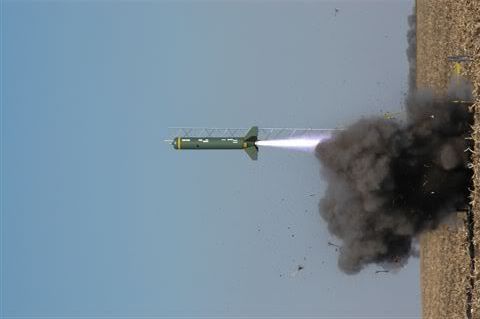gregzo
Well-Known Member
- Joined
- Jun 24, 2009
- Messages
- 856
- Reaction score
- 1
Has anyone played with this stuff to make any rocket fins? I made a 12" rocket with 3/8" Aluminum Honeycomb. I machined into the honeycomb sandwich to remove the honeycomb by 1/4" and left the skins in tact. Then I took 3/8" x 1" fiberglass stock and machined down one edge by 1/16" x 1/4" per side so it would slip into the honeycomb material. The other edge was machined into an airfoil-ish. The tip cord got squared off fiberglass fairings. I bonded the edge fairings into the fin stock with 3M DP420 Industrial Epoxy. The fins are 20" on the root edge and 16" span. They are stiff as all get out. They seem pretty light for their size...but I'm not sure just how much I saved in weight.
It flew on an L930 Loki White and did great. I was worried about the whole thing coming apart in flight. The fin are carbon fiber strip re-inforced to the motor tube and to the ID of the body tube. It is a short rocket - only 48" of body tube total. I can put up to an AT M1939 in it...that should test the fins!!!
I'll post some pics in a bit.
It flew on an L930 Loki White and did great. I was worried about the whole thing coming apart in flight. The fin are carbon fiber strip re-inforced to the motor tube and to the ID of the body tube. It is a short rocket - only 48" of body tube total. I can put up to an AT M1939 in it...that should test the fins!!!
I'll post some pics in a bit.




